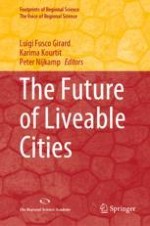2023 | OriginalPaper | Buchkapitel
Defining Indicator Systems for Liveable Cities
verfasst von : Rudolf Giffinger, Hans Kramar
Erschienen in: The Future of Liveable Cities
Aktivieren Sie unsere intelligente Suche, um passende Fachinhalte oder Patente zu finden.
Wählen Sie Textabschnitte aus um mit Künstlicher Intelligenz passenden Patente zu finden. powered by
Markieren Sie Textabschnitte, um KI-gestützt weitere passende Inhalte zu finden. powered by
